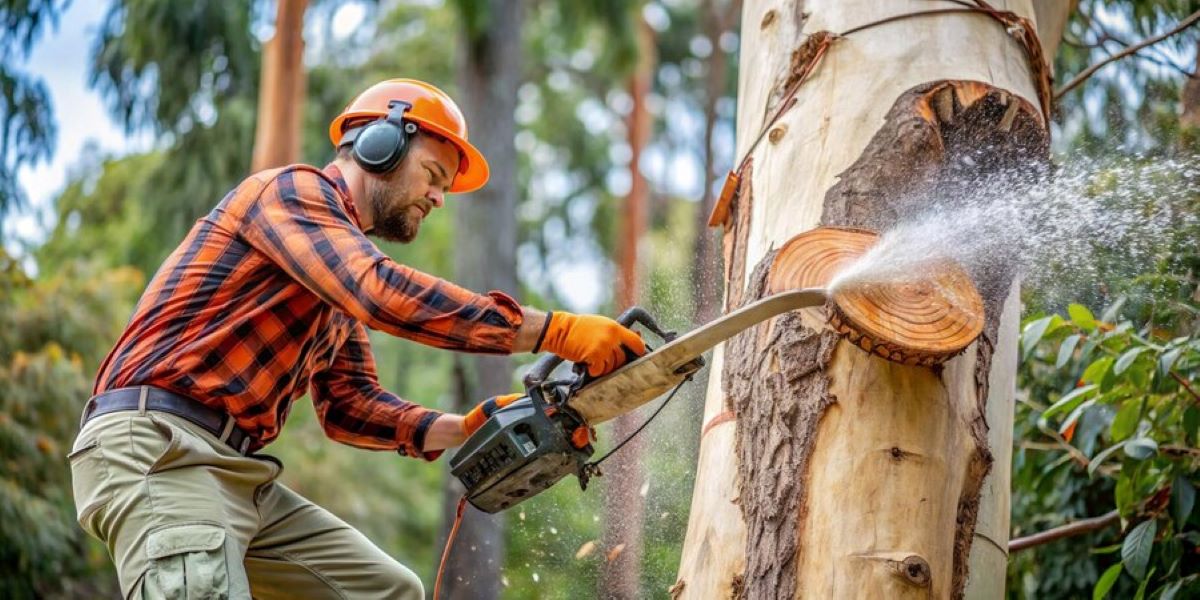What Factors Influence Tree Removal Costs?
Tree removal costs vary dramatically based on numerous interconnected variables. Understanding these tree removal cost factors helps property owners anticipate expenses and budget appropriately for this essential service.
Tree Size and Species Matter Significantly
How does tree size affect tree removal cost? Larger trees demand substantially more resources, labour hours, and specialised equipment. A small ornamental tree under 7 metres might cost a few hundred pounds to remove, whilst a mature oak exceeding 25 metres could run into thousands. The height and trunk diameter directly correlate with the complexity of safely dismantling and lowering sections to the ground.
Why do different species cost different amounts? Tree species exhibit varying characteristics that impact removal difficulty. Dense hardwoods like oak or beech require more powerful cutting equipment and take longer to process than softer woods. Some species feature extensive branch networks that must be carefully removed piece by piece, whilst others have thorns or produce allergenic compounds requiring additional protective measures for workers.
Location and Accessibility Create Pricing Variations
What makes location such a critical cost factor? Trees situated near structures, overhead power lines, swimming pools, or boundary fences present elevated risk levels. Arborists must employ precision techniques, potentially using ropes and rigging systems to control each section’s descent. This meticulous approach prevents property damage but extends project duration considerably.
How does terrain affect pricing? Steep slopes, narrow side passages, or rear gardens without vehicle access complicate equipment transport. Heavy machinery like wood chippers or stump grinders may need manual positioning, requiring additional crew members. Properties with limited access often necessitate smaller, less efficient equipment, increasing labour time and associated costs.
Environmental Obstacles Require Extra Care
Structures surrounding the tree—garden sheds, paving, decorative tiles, or established flower beds—demand protective measures during removal. Arborists must work methodically to avoid collateral damage, sometimes hand-carrying debris rather than dropping it freely. Delicate surfaces beneath the tree may require protective boarding, adding setup time and materials to the final invoice.
Weather Conditions Impact Project Timeline
Adverse conditions like heavy rainfall, strong winds, or extreme heat directly affect work schedules. High winds make climbing dangerous and prevent safe lowering techniques from being employed. Rain-soaked ground becomes unstable for heavy machinery operation while excessive heat poses health risks to workers. These weather-related delays can extend the overall duration of the project beyond initial estimates.
Understanding these factors influencing tree removal costs empowers property owners to make informed decisions when hiring professionals for this task. By considering elements such as size, species, location accessibility environmental obstacles weather conditions in their budgeting process they can ensure adequate funds are allocated towards securing quality arborist services without any surprises along the way!
How Can You Get an Accurate Quote for Tree Removal?
What makes a tree removal quote truly accurate? An accurate tree removal quote stems from a comprehensive assessment by a qualified arborist who evaluates every aspect of your specific situation. Professional evaluation remains the cornerstone of getting reliable estimates that reflect the actual work required.
Why should you prioritise licensed and insured companies?
Researching reputable companies protects both your property and your wallet. Licensed providers demonstrate their commitment to industry standards, whilst insurance coverage shields you from liability if accidents occur during removal. Check online reviews, verify credentials with local trade associations, and confirm that companies hold current public liability insurance before requesting quotes.
What information helps arborists provide accurate estimates? Detailed descriptions of your tree and site conditions enable professionals to prepare appropriate equipment and crews. Share specifics about tree height, trunk diameter, species if known, and visible health issues like dead branches or decay. Describe the surrounding environment including proximity to structures, overhead power lines, fencing, gardens, and access points for equipment. Visit https://agriculture.vic.gov.au/biosecurity/plant-diseases/shrub-and-tree-diseases to get more about shrub and tree diseases.
What can an on-site inspection reveal?
Does a visual assessment really matter for pricing accuracy? On-site inspections uncover factors that photos and descriptions cannot capture. An arborist examines root systems, assesses structural integrity, identifies potential hazards, and evaluates ground conditions that affect machinery placement. Hidden complications like internal decay, pest infestations, or unstable lean patterns significantly impact removal methods and costs.
The inspection allows professionals to:
- Measure exact tree dimensions and calculate volume
- Identify the safest removal technique for your specific situation
- Spot obstacles that require specialised equipment
- Assess soil stability and drainage affecting crane placement
- Determine the most efficient access route for equipment

How many quotes should you obtain?
What’s the ideal number of estimates to compare? Three to five quotes provide a realistic market range without overwhelming your decision-making process. This sample size reveals whether one provider’s pricing sits significantly outside the norm, potentially indicating either exceptional value or concerning shortcuts.
Analyse each quote’s scope carefully rather than selecting the lowest price automatically. Some providers include stump grinding, debris removal, and site cleanup in their base price, whilst others charge separately for these services. A seemingly expensive quote might offer better value when all services are itemised and compared.
Conclusion
Understanding tree removal pricing requires careful consideration of multiple factors, including tree characteristics and regulatory requirements. The best quote for tree removal comes from thorough research, professional on-site inspections, and comparing detailed proposals from licensed providers.
Ready to move forward with your tree removal project? Contact certified arborists in your area for personalised assessments today. These qualified professionals will evaluate your specific situation, identify potential challenges, and provide transparent pricing tailored to your needs. Don’t leave tree removal to chance—invest in expert guidance to ensure safe, efficient removal whilst protecting your property and budget.
More to Read : Tree Removal Service: When Is Tree Removal the Only Safe Option?
Quick FAQs: Tree Removal Costs
Larger trees need more labour, equipment, and time. Small trees under 7 m may cost a few hundred pounds, while mature trees over 25 m can run into thousands.
2. Do tree species impact the price?
Yes. Dense hardwoods like oak require more effort and stronger tools, whereas softwoods are easier to remove. Some species have thorns or allergens that add safety precautions.
3. Why does location matter?
Trees near buildings, fences, pools, or power lines need careful, precise removal. Limited access or steep terrain can increase labour and equipment costs.
4. How do environmental obstacles affect pricing?
Sheds, patios, flower beds, and delicate surfaces require extra protection and careful handling, raising the cost.
5. Can weather impact removal costs?
Yes. Rain, wind, or extreme heat can delay work, make machinery unsafe, and extend project duration.
6. How do I get an accurate quote?
A professional on-site inspection is essential. Arborists assess tree size, health, root stability, site obstacles, and access to determine the safest and most efficient removal method.
7. How many quotes should I compare?
Get 3–5 quotes from licensed, insured arborists. Compare what’s included—like stump grinding, debris removal, and cleanup—rather than just the lowest price.
8. Why hire a certified arborist?
Certified arborists ensure safe removal, protect your property, follow regulations, and handle complex trees efficiently, avoiding costly mistakes or accidents.


